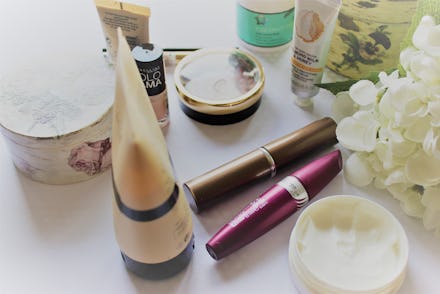Beauty standards mean nonwhite women are exposed to more toxic compounds

Most people have some sort of beauty routine, whether straightforward or complex. But society’s definition of “beauty” doesn’t affect us all equally. A new article in the American Journal of Obstetrics and Gynecology argues that trying to meet these narrow beauty standards can disproportionately expose people of color to potentially dangerous chemicals.
Around the world, beauty products are more than a $250 billion market, and much of that money comes from women of color.
“African-American consumers purchase nine times more ethnic hair and beauty products than other groups, and disproportionately purchase hair relaxers and straighteners,” authors Ami R. Zota and Bhavna Shamasunder wrote. “Latinos are the fastest-growing ethnic beauty market segment, and Asian-Americans spend 70% more than the national average on skin care products.”
Unhealthy chemicals
Skin whiteners, hair-straightening products and scented feminine hygiene products are often marketed to this consumer demographic, despite the fact they’re often unhealthy. Take skin whiteners, for example: These creams, typically marketed with what the authors call “derogatory images,” often contain mercury, which can be damaging to kidneys and the central nervous system.
Hair-straightening products, which have been popularly marketed to African-American women because of racist perceptions of their natural hair, can also be hazardous. They often contain placenta, which might expose users to more estrogen. Some start using these products on girls as young as 4 years old, who may start puberty earlier because of the hormone exposure.
The paper also mentioned “odor discrimination” against African-American women. As a result, black women in the United States are more likely to use douches or to apply talc, the main ingredient in baby powders, to their vaginas. Vaginal douches can expose women to a chemical called diethyl phthalate, which can affect hormone balances during pregnancy; meanwhile, talc can increase the risk of ovarian cancer.
The authors also pointed out that even people who choose not to use these products themselves may still suffer their effects while working in the beauty industry, which employs mainly women of color and immigrants.
The effects of certain products can also be passed onto children if used right before or during pregnancy, according to the article.
Part of the issue is that the Food and Drug Administration doesn’t actually approve cosmetics and has limited options for trying to regulate the most concerning products. Manufacturers test their own products and don’t have to report bad reactions, for instance. Safety is generally up to the product producers, with the exception of a small number of chemicals under FDA ban and the regulation of color additives.
The other part of this issue is a little more obvious: It’s our society’s troubling beauty standards pressuring women of color to modify their bodies.